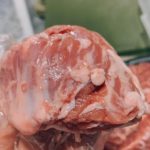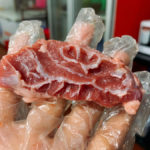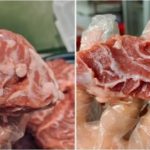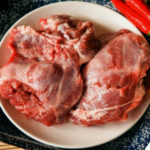Pork Cheek Meat: A Succulent and Nutritious Delicacy
Often referred to as pork jowl, pork cheek consists of two distinct parts: the outer cheek and the inner cheek, also known as pork cheek fat. While the outer cheek is characterized by its fat content, the inner cheek boasts a tender combination of meat and fat interspersed with delicate sinews. These sinews are not tough or chewy but rather soft and thin, contributing to the exceptional flavor and popularity of this cut.
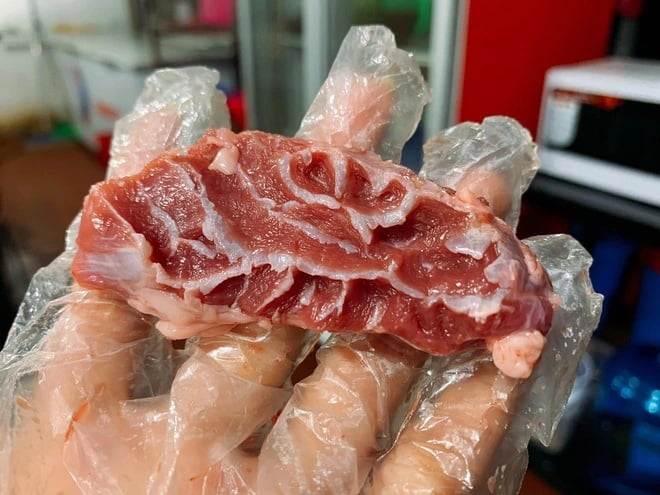
According to experienced butchers, pork cheek fat is considered one of the most delectable parts of the pig.
The distinguishing feature of pork cheek fat is its abundance of sinews, which, despite their presence, lend a soft and tender texture to the meat without any hint of toughness or chewiness. This cut is available in local markets but tends to sell out quickly due to its high demand. Many homemakers report that by 7 am, pork cheek fat is often no longer available for purchase.
Exceptional Health Benefits
Beyond its delicious taste, pork cheek meat offers numerous health benefits, including:
Rich in Vitamins B and D: These vitamins play a crucial role in digestive health, supporting the absorption of essential nutrients and boosting the immune system.
Abundant in Minerals: Pork cheek meat contains a wealth of minerals that nourish the nervous system, enhancing memory function, and effectively reducing stress levels.
Beneficial for Eyes and Bones: The nutrients in pork cheek fat contribute to healthy eyes and bones, preventing osteoporosis and promoting overall well-being.
Supports Recovery from Illness: Pork cheek meat aids in the recovery process for individuals who have been ill.
Promotes Healthy Skin: The collagen content in pork cheek meat benefits skin health, resulting in a more radiant and youthful appearance.
Purchasing Pork Cheek Fat: What to Consider
Due to its limited availability, it is advisable to arrive at the market early or make a reservation with the butcher to secure this sought-after cut. When selecting pork cheek fat, pay attention to the following characteristics:
– **Dry Surface:** The surface of the pork cheek fat should be dry and free of moisture. Wetness may indicate that the meat has been injected with water or frozen.
– **Fresh Color:** Look for meat with a bright and pinkish-red hue, avoiding any signs of discoloration or darkening.
– **No Off-Odors or Leakage:** The meat should not have any unusual odors or excessive leakage, and it should exhibit good elasticity.
Tips for Cooking Delicious Pork Cheek Fat
While the recipes for pork cheek fat appear simple, follow these tips to ensure a perfect and flavorful dish:
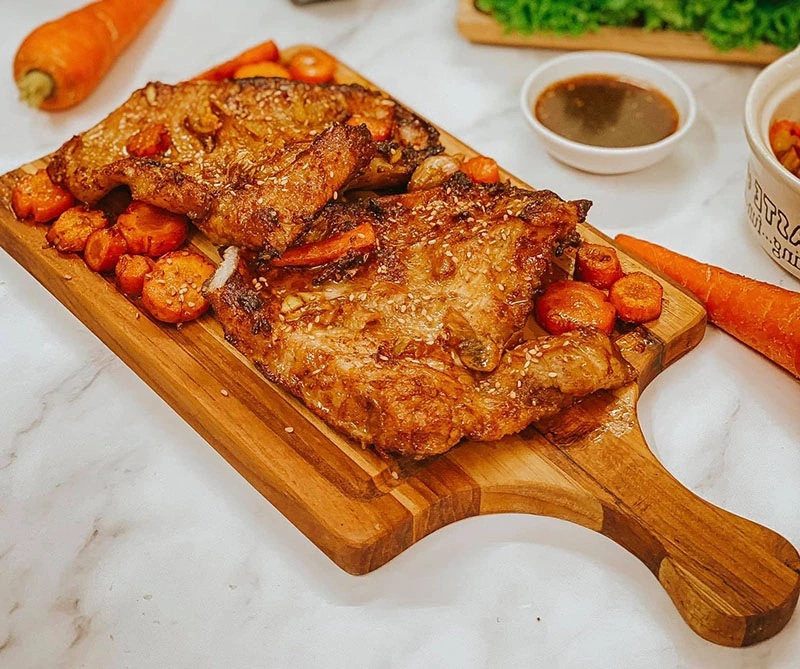
Cook the meat for an extended period to prevent toughness. The fat will render out, resulting in tender and flavorful meat.
– **Cook for an Appropriate Time:** Allow sufficient cooking time to tenderize the meat without making it tough or dry.
– **Brown First:** Instead of directly boiling the meat, brown it in a pan over medium heat on both sides before stewing or braising.
– **Infuse Flavor:** Add 1-2 slices of fresh ginger or scallions to the boiling water to remove any unwanted odors.
– **Experiment with Alcohol:** Replace rice wine with apple cider vinegar or red wine to enhance the flavor of the dish.
– **Combine with Vegetables:** Braised pork cheek fat can be paired with vegetables such as carrots or potatoes for a delicious and nutritious meal.
- Allow sufficient cooking time to tenderize the meat without drying it out.
- Brown the meat in a pan over medium heat before stewing or braising to add flavor and color.
- Infuse the dish with fresh ginger or scallions to enhance the aroma and remove any unwanted odors.
- Experiment with using apple cider vinegar or red wine instead of rice wine to add a unique twist to the flavor profile.
- Combine braised pork cheek fat with vegetables like carrots or potatoes for a well-rounded and nutritious meal.

